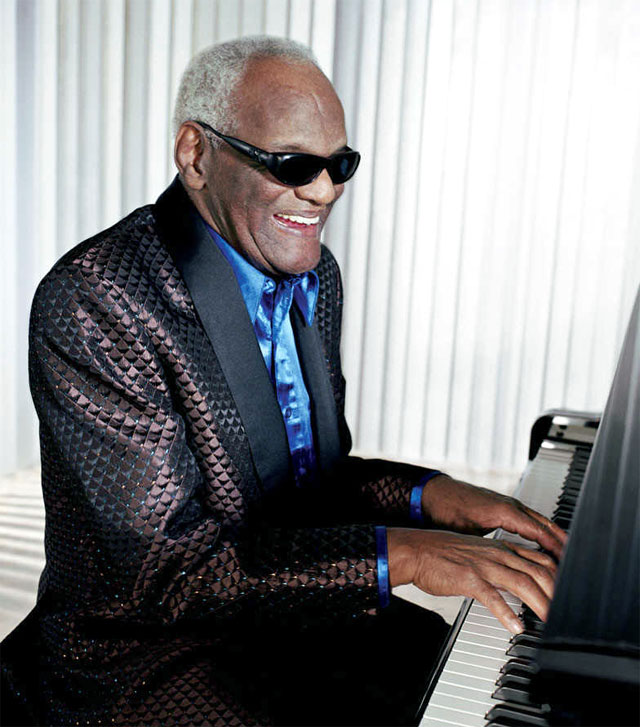|










| |
"Maybe I put together two things that hadn't been put together before, but
hell, give credit to the church singers and the bluesmen who I got it from. I
got enough credit." Ray Charles
| Ray Charles (1930-2004) was born in Albany, Georgia . Originally
named Ray Charles Robinson, he changed his name to Ray Charles to avoid
being confused with the boxer, Ray Robinson. Charles began to lose his sight
at the age of six and one year later his parents enrolled him at the St.
Augustine School for the Deaf and Blind. While there, Robinson learned to
read and write music using Braille and he studied the piano, organ, alto
saxophone, clarinet, and trumpet. He focused primarily on the piano.

Charles began to gig around Florida when he was 15 and two years later, in
1947, he moved to Seattle. In 1949 he cut his first records in Los Angeles.
In 1951 he had his first hit with Baby, Let Me Hold Your Hand.
His contract was picked up by Atlantic Records in 1952, but his career
didn't really move forward until he hooked up with Guitar Slim in New
Orleans the following year. In New Orleans, Charles picked up the gospel
influences that would change his style. I've Got a Woman (1954) had
all the hallmarks of his new approach---gospel style piano, a seven piece
back-up group, and no hold barred vocals. The key to his success was the
transformation of gospel standards into secular hits providing the
foundation for soul music and the later success of singers like James Brown,
Solomon Burke, Sam Cooke, and countless others. In 1959 he had his first million
seller, What'd I Say (this song was later covered by Elvis Presley in
his movie Viva Las Vegas). Charles' vocals in the middle of this song were
considered so suggestive that the hit was banned in some markets. In
the early 1960s he released a two record set of versions of country songs
that blurred the lines between country, pop, and rhythm and blues. Charles remained active until his death, releasing a duet album in
2004 in which he collaborated with B.B. King, Natalie Cole, James Taylor,
and others.
|
|
